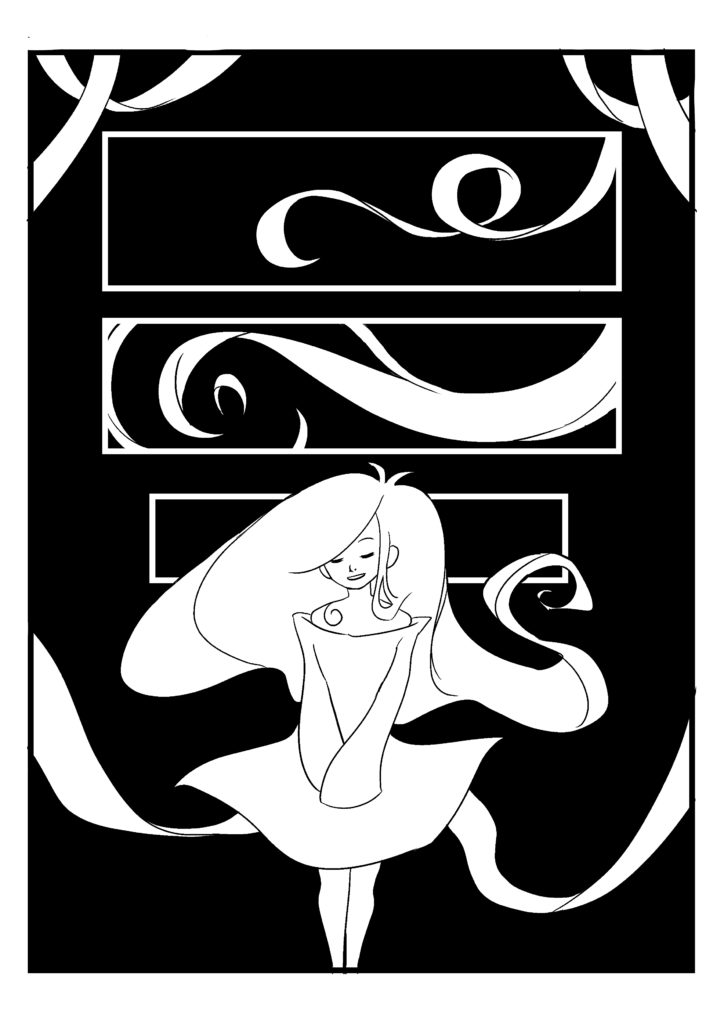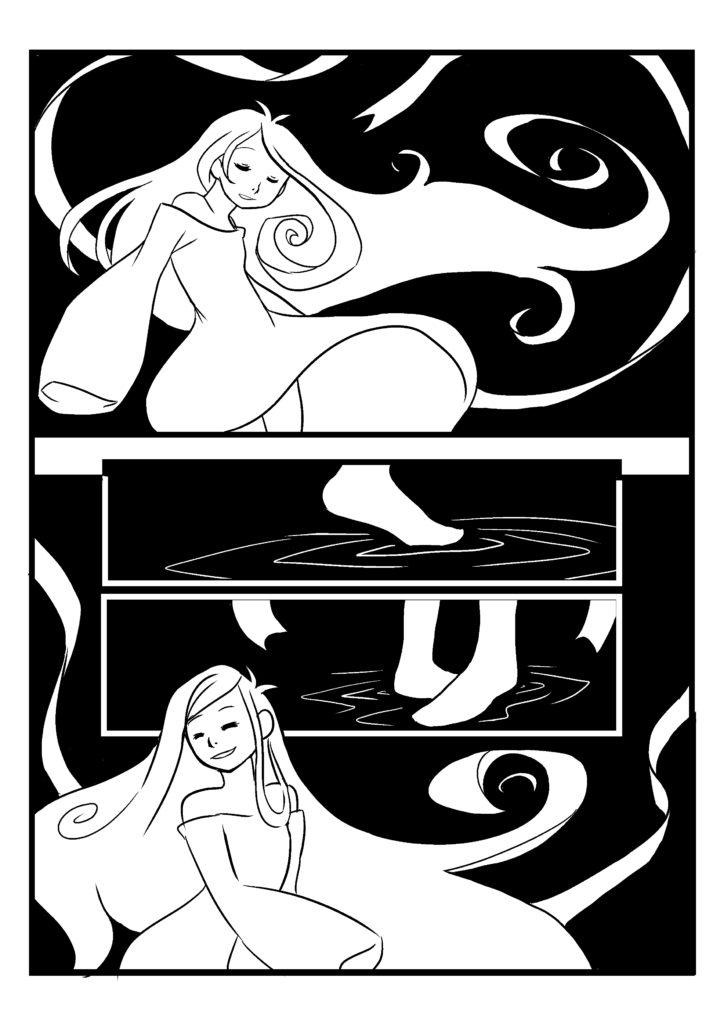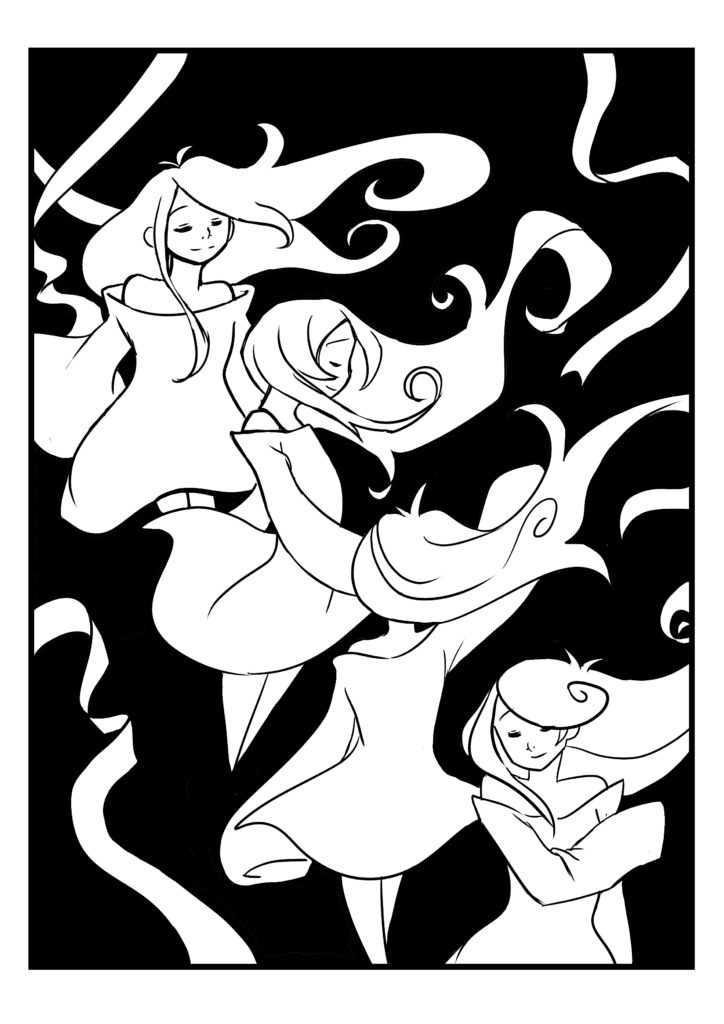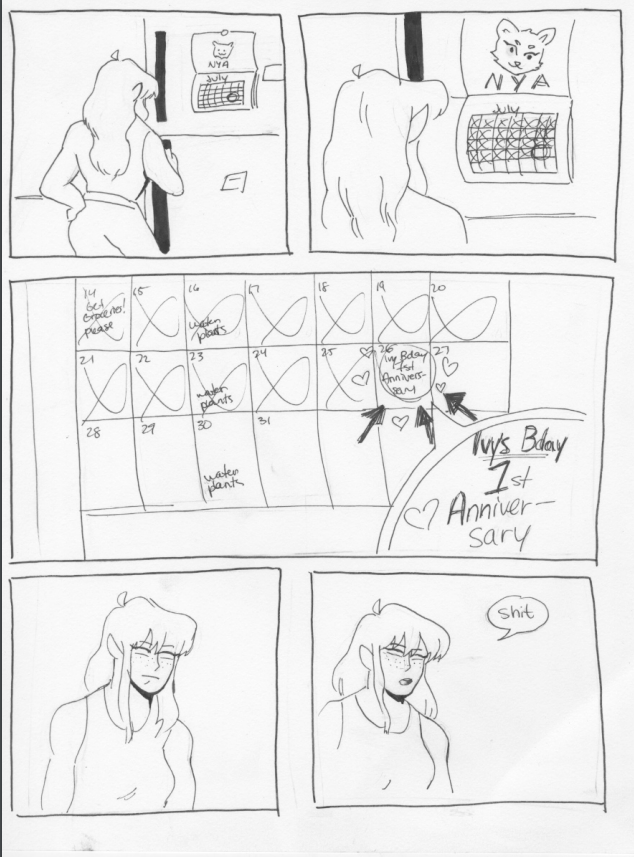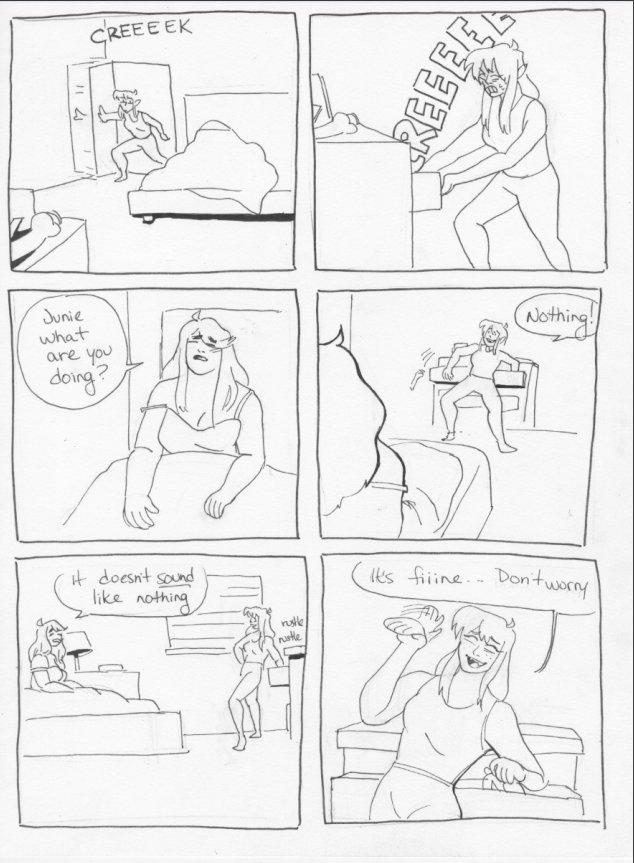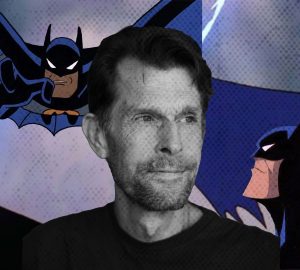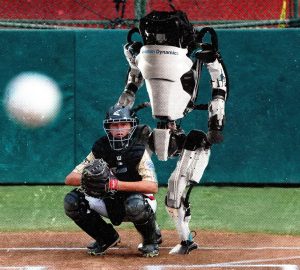See student work from Generate 2017’s comic challenge
by Masha Zhdanova
Eleven years ago, the SCAD Atlanta sequential art department started Generate as a comic challenge, the goal of which was to create a 24-page comic in 24 hours. Now, Generate has grown into a school-wide, 24-hour art challenge that almost every department participates in with dozens of major corporate sponsors, midnight pizza and endless outpourings of creativity. The sequential art students still make 24 hour comics, though.
The first person to finish this year was Alexia Andrews, a sequential art graduate student, who completed her comic around 2 a.m.
“When coming up with the idea, I wanted to do something with spotted blacks and negative space,” said Andrews. “So I went with concept of dancing with light and darkness personified. Since there was no dialogue, I only had to focus on the visual storytelling.”
Andrews suggested keeping the concept simple and timing yourself on every part of the challenge, including thumbnails, inking and lettering. Her comic, “Milk and Coffee,” reads both left-to-right and right-to-left, and ends in the center of the comic.
The rules of the sequential art challenge maintain that no drawing may be done before the start of the challenge, but most contestants came in with at least a beginning of an idea.
“I tried to come up with a very easy storyline, not caring about whether or not it was a totally fresh idea,” said Connie Hernandez, a second-year sequential art student, who finished her comic in 22 hours. Hernandez suggested not worrying about adding too much detail or getting hung up on making it pretty, because the important part is to get it done. Her comic, “Love Love,” is about a girl who forgot her girlfriend’s birthday and anniversary.
Salem Powell, a sequential art graduate student, agreed that cliches are a very useful shortcut when it comes to creating this much work in a short amount of time. “The main tool I used for making my story cohesive was The Hero’s Journey, a technique of storytelling that gives tried but true guidelines for a successful narrative,” Powell said. Powell’s comic is inspired by Freudian psychology, with characters based on Id, Ego and Superego in a town called Psyche.
I completed my 24-page comic around 3 a.m., and I saved myself time on planning by making it autobiographical so I didn’t have to make up a plot. It was stressful, especially because I chose to help out with the Marksmen Drawing Club challenge at the same time. I ended up just working on my comic in the same room as the Marksmen people instead of in the sequential room for most of the event.
The Marksmen created a zine in 12 hours. We used the first two hours to develop character designs. Then, Associate Dean of Fine Arts Kent Knowles selected the best design, and everyone had to create comics and illustrations featuring that character. At the end of the event, the chair of sequential art selected his top three favorite pieces, and Rebecca Stetina-Sawyer, vice president of the Marksmen Drawing Club, compiled and printed the finished product.
After the Marksmen challenge officially ended, I said goodbye and went back to the sequential classroom to keep working on my comic. It was pretty challenging, especially around midnight, because it really didn’t feel like midnight. It felt like it had been around 7 p.m. for three hours straight. I drank two cups of coffee, which is two more than I usually drink, so I felt kind of jittery and unbalanced. I had a hard time drawing reasonably rectangular panel borders, and my lettering was pretty uneven in places because I didn’t bother using a lettering guide. I’m still fairly pleased with the end result.
It felt nice to focus intensely on one project for an extended period of time. In a normal school week, I have a lot of projects and activities demanding my attention, but for one day I got to push everything off to focus on my Generate project. The stress was invigorating, although the thumbnail stage was really scary for me because I was worried I wouldn’t have enough to fill 24 pages, and then that my 24 pages would be too text-heavy. My original concept was to just explain the rules of a game I played at summer camp, but that ended up being less than half of the final product. This was the first time I ever told a complete story within 24 pages. Most of my other mini-comics are a lot shorter, so this was a new experience. I’m proud of what I accomplished.
Hernandez, Powell and I all intend to complete this challenge again next year. “Next year I’m going to design my characters on-the-spot and try to do everything digitally,” Hernandez said.
Powell wants to spend more time socializing and interacting with others while working on the comic. “That’s what makes SCAD Generate so unique,” said Powell. “Anyone can decide to make 24 pages in 24 hours, but organizing an event where everyone is participating together is an amazing experience.”
I’m going to try telling a fictional story next time, and make up something new from scratch. Hopefully, I can finish it again.
To see my full 24-page comic, click here.

























